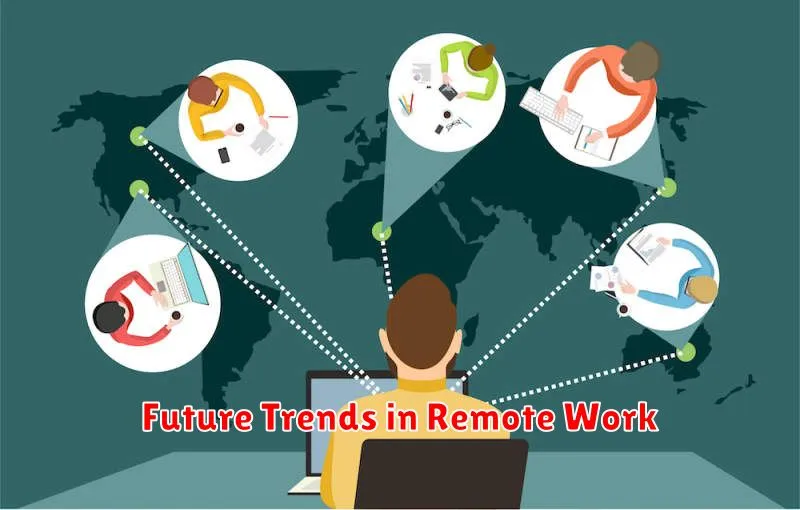Managing a remote workforce presents unique challenges and opportunities for businesses in today’s dynamic environment. Successfully navigating this new landscape requires a strategic approach that encompasses effective communication, collaboration tools, and performance management strategies specifically designed for a distributed team. This article will explore proven strategies and cutting-edge technologies crucial for achieving success with a remote workforce. From establishing clear communication protocols and fostering a strong company culture to leveraging the latest project management software and cybersecurity measures, we’ll delve into the essential components of a thriving remote work environment.
Optimizing productivity and maintaining employee engagement are key factors in maximizing the benefits of a remote workforce. This comprehensive guide will provide actionable insights into implementing effective remote work strategies, selecting the right technologies to support your team, and addressing the unique challenges of managing a distributed workforce. Whether your organization is fully remote, hybrid, or just beginning to explore remote work options, understanding the principles and implementing the strategies discussed in this article will be essential for achieving remote workforce success.
The Rise of Remote Work
The shift towards remote work has been dramatically accelerated in recent years. While previously considered a niche perk, remote work has become increasingly mainstream, reshaping the traditional workplace landscape. This evolution has been driven by several key factors, including advancements in communication technologies, a growing desire for work-life balance among employees, and changing business needs.
Businesses have recognized the potential benefits of remote work, such as reduced overhead costs, access to a wider talent pool, and increased employee productivity. Employees, in turn, value the flexibility and autonomy that remote work provides. This shift presents both opportunities and challenges for organizations navigating the new world of work.
Essential Technologies for Remote Teams
Communication tools are crucial for remote teams. These include video conferencing platforms for meetings and instant messaging applications for quick questions and updates. Effective communication tools reduce miscommunication and promote collaboration.
Project management software helps teams stay organized and track progress on tasks. Features like task assignment, deadline tracking, and file sharing ensure everyone is on the same page.
Cloud storage allows team members to access files from anywhere. This eliminates the need for emailing large files and ensures everyone works with the most up-to-date versions.
Communication Tools for Seamless Collaboration

Effective communication is crucial for remote teams. Choosing the right tools can significantly impact productivity and collaboration. Several categories of tools facilitate seamless communication.
Instant Messaging Platforms: These tools allow for quick questions, file sharing, and informal discussions. They are essential for maintaining a sense of connection and addressing time-sensitive matters.
Video Conferencing Software: Face-to-face interaction, even virtual, fosters stronger relationships and clearer communication. Video conferencing is invaluable for team meetings, client presentations, and one-on-one discussions.
Project Management Tools: While not solely communication tools, these platforms often integrate communication features, facilitating centralized discussions around tasks, deadlines, and project updates.
Maintaining Productivity Remotely
Maintaining productivity while working remotely requires proactive strategies and a shift in mindset. Establishing a dedicated workspace is crucial. This helps separate work from personal life and promotes focus.
Effective time management is essential. Utilize tools like calendars and to-do lists to structure your day. Prioritize tasks and break down large projects into smaller, manageable steps. Regular communication with your team is also vital. This ensures everyone stays informed and aligned on project goals.
Managing Remote Teams Effectively
Effective management of remote teams requires a shift in mindset and approach. Clear communication is paramount. Establish regular check-ins, utilize various communication channels, and ensure expectations are clearly defined and understood.
Building trust is crucial. Encourage collaboration and social interaction amongst team members. Focus on outcomes and results rather than micromanaging daily activities. Provide opportunities for skill development and career advancement to maintain engagement and motivation.
Utilize technology to streamline workflows. Project management tools, video conferencing software, and collaborative platforms can enhance productivity and keep everyone connected. Regularly assess and adapt your strategies based on team feedback and evolving needs.
Cybersecurity for Remote Employees
Security is paramount in a remote work environment. Employees accessing company data and systems from diverse locations introduce vulnerabilities. Vigilance and adherence to best practices are crucial for mitigating risks.
Key security measures include:
- Strong passwords: Utilize complex passwords and change them regularly.
- Multi-factor authentication (MFA): Implement MFA for all accounts.
- Software updates: Keep all software and operating systems up-to-date.
- Secure Wi-Fi: Use strong, password-protected Wi-Fi networks.
- VPN usage: Use a Virtual Private Network (VPN) for secure connections.
Regular security awareness training is vital to educate employees about potential threats like phishing and social engineering, reinforcing safe practices.
Work-Life Balance in Remote Work
Maintaining a healthy work-life balance is a critical aspect of remote work. The flexibility offered by remote work can blur the lines between professional and personal life, leading to potential burnout if not managed effectively.
Establishing clear boundaries is essential. This includes setting dedicated work hours, creating a designated workspace, and communicating expectations to family members. Regular breaks and time off are equally important for maintaining productivity and preventing burnout.
Utilizing time management techniques, such as the Pomodoro Technique, can help structure the workday and promote focused work periods. Prioritizing tasks and minimizing distractions also contribute to a more balanced and productive remote work experience.
Creating Effective Remote Policies
Clear and comprehensive remote work policies are crucial for a successful transition to a distributed workforce. These policies should outline expectations for communication, availability, and performance.
Key areas to address include: work hours and flexibility, communication protocols, data security and privacy, equipment and technology provisions, and performance management. Clearly defined guidelines ensure consistency and transparency for all remote employees.
Regularly reviewing and updating these policies is essential to adapt to evolving needs and maintain effectiveness.
Monitoring and Measuring Remote Work
Effectively managing a remote workforce requires monitoring and measuring productivity. While traditional metrics like attendance become less relevant, focusing on output and results is crucial.
Key Performance Indicators (KPIs) should be clearly defined and aligned with overall business objectives. These KPIs may include project completion rates, client satisfaction scores, or sales targets. Regular check-ins and progress reports can help track performance and identify potential roadblocks.
Utilizing project management software and communication tools allows for transparent workflow tracking and efficient collaboration. These tools can offer valuable data insights into individual and team productivity.
Future Trends in Remote Work

The future of remote work promises further evolution and innovation. Flexibility will remain a core aspect, with hybrid models becoming increasingly prevalent, allowing employees to blend in-office and remote work seamlessly.
Virtual and augmented reality are poised to transform collaboration and communication, creating immersive digital workspaces. Artificial intelligence will further automate routine tasks, freeing up employees for more strategic work.
The focus on employee well-being will intensify, with companies investing in digital wellness programs and tools to support remote workers’ mental and physical health. Decentralized autonomous organizations (DAOs) may also gain traction, offering a new paradigm for remote work governance.

